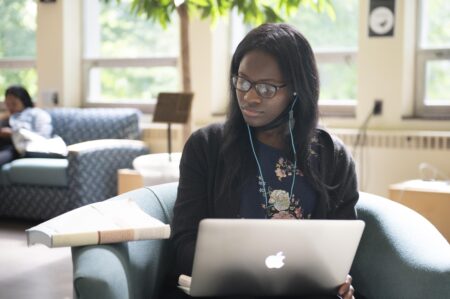Create Opportunities for Self-Knowledge
 Understanding individual traits and preferences can help students set themselves up for more productive studying and course work.
Understanding individual traits and preferences can help students set themselves up for more productive studying and course work.
This week’s “Be a Strong Student” message to students asks them to “know their strengths and weaknesses,” encouraging reflection to better plan for how to do their best work. This strategy builds on the earlier “plan your time” strategy.
Here are some strategies instructors can implement:
- Assign self-reflection and planning activities such as exam wrappers or brief exercises after major assignments are submitted that prompt students to reflect on their learning process, and changes they might make in the future.
- Encourage students to think about how, when, and where they work best (for example, in the library at 4 pm). Students may believe that they work best under certain conditions, so encourage them to experiment with others to prove or disprove their inclination.
- Reserve some class time to discuss who learns best under which circumstances.
- Offer a low-stakes activity (such as a discussion board) in which students share study strategies with their peers.
- Have a dedicated five-minute block of time during class when students can initiate study groups or block out a few study slots on their calendars.
Help students realize that sometimes work must be done at a particular time, regardless of whether they are an early bird or night owl. Model this in class by using activities that encourage focus:
- Give students a moment to acknowledge and then put away thought distractions.
- Try leading a short mindfulness practice
- Investigate Contemplative Pedagogy Practices.
- Pause class for a short “movement break” to refocus attention–such as walking in place or stretching.
 Understanding individual traits and preferences can help students set themselves up for more productive studying and course work.
Understanding individual traits and preferences can help students set themselves up for more productive studying and course work.